Branches, Buds, and Bark – Oh My! What Folks Learned at a Recent Winter Tree and Shrub Identification Workshop
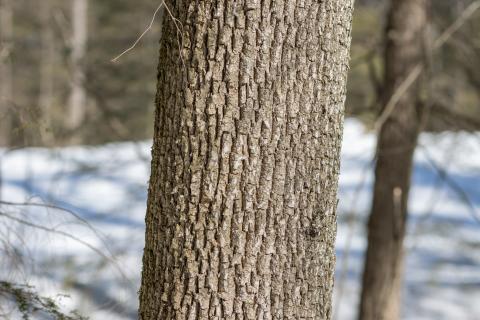
This blog was adapted with permission from Piscataquog Land Conservancy. You can read the original article here.
A couple of weeks ago, UNH Extension partnered with the Piscataquog Land Conservancy (PLC) and the Brookline, NH Conservation Commission and to host a Winter Tree and Shrub ID Event at Hobart-Fessenden Woods in Brookline. Bundled up to brave the 7-degree temperature, Mike Gagnon, Hillsborough County Extension Forester led a group of folks through the woods to practice identifying trees and shrubs in winter.
Winter identifications can be tricky! Without foliage and flowers, you need to take a closer look at the branches, buds, and bark. Mike walked the group through branching patterns, bud characteristics, and ways to evaluate and describe different barks to help us get closer to positive identifications. With the right mindset for observation, familiarity with field guides, and clever pneumonic devices it can be a great way to challenge your skills and enjoy nature in the colder seasons.
Did you know that you’ll find the most species diversity along the edges of forests, fields, and wetlands? Despite not walking a lot of miles and staying close to the trailhead, Mike guided the group through more than 20 tree and shrub identifications—plenty of species to help folks sharpen their winter tree and shrub ID skills.
Here are five trees and shrubs the group learned about:
1) White Ash - Fraxinus americana
White Ash has notably stout twigs with an opposite branching pattern, a huge clue! Plant families with opposite branching patterns are less common and include1:
- Ash trees
- Dogwood trees/shrubs
- Elderberry
- Horse chestnut tree
- Maple trees
- Viburnums (arrowwood, maple-leaf viburnum, nannyberry, etc.)
We can’t talk about ash trees without mentioning emerald ash borer (EAB). EAB is a non-native invasive insect that only targets ash trees. In the crown of the tree the group was identifying, woodpecker damage indicated the presence of EAB. Why is woodpecker activity a sign of EAB? Woodpeckers find them particularly tasty and scratch away the outer bark to access the EAB larvae below. EAB also leaves behind serpentine larval galleries beneath the bark. Unfortunately, untreated trees with EAB will eventually die. You can learn more about EAB in New Hampshire by visiting NHBugs.org.
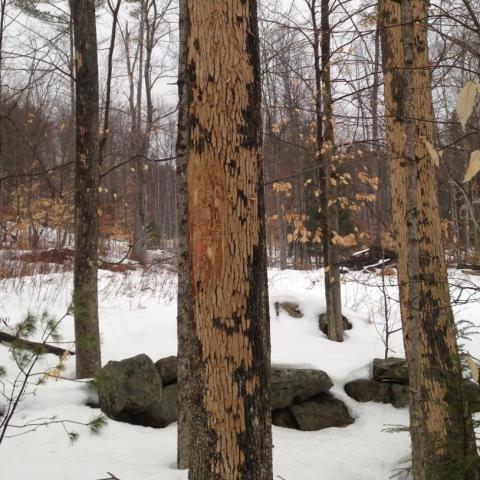

2) Silky Dogwood - Cornus amomum
The opposite branching pattern was the first feature the group noticed about this species discovered in a wetland area. Mike asked the group an obvious but necessary narrowing question: “Is this a tree?”
After some observation, the group unanimously agreed that it was not a tree but in fact a shrub–likely a member of the dogwood family. But which one?
Silky and red-osier dogwoods were good candidates due to the smooth red bark. How can you tell the two apart? The trick is in the pith–or the central tissue of the plant. After slicing a sample of the plant with pruning shears, the characteristic tan center confirmed it was a silky dogwood. Also present was very fine silky hairs on the new growth of the plant, a characteristic that fits with the common name.
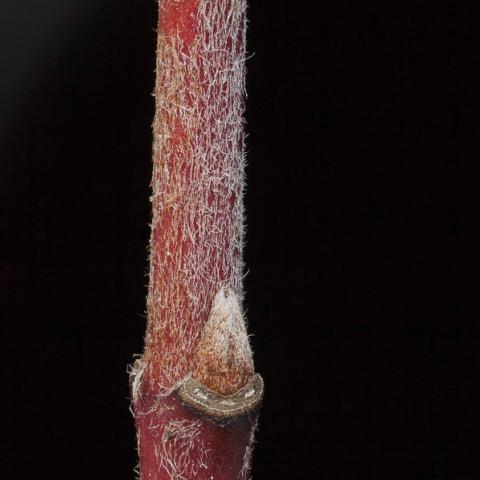
Photo courtesy of the Northern Forest Atlas

Photo courtesy of Piscataquog Land Conservancy
3) American Chestnut - Castanea dentata
A short ways up the trail was a straight, young sapling with smooth bark. Notably, there was a similar looking but dead sapling next to it. “You’ll know what this is because of what it is,” said Gagnon rather cryptically. The sapling had sprouted from the same stump as the dead one, and it became clear that this was the blight-ravaged American Chestnut. The pathogen, Cryphonectria parasitica, has reduced the once dominant tree to a successional shrub.
American Chestnut restoration projects are in progress, seeking paths to renewed hope for the species. You can learn about these projects led by the American Chestnut Foundation at https://acf.org/.

Photo courtesy of the Northern Forest Atlas
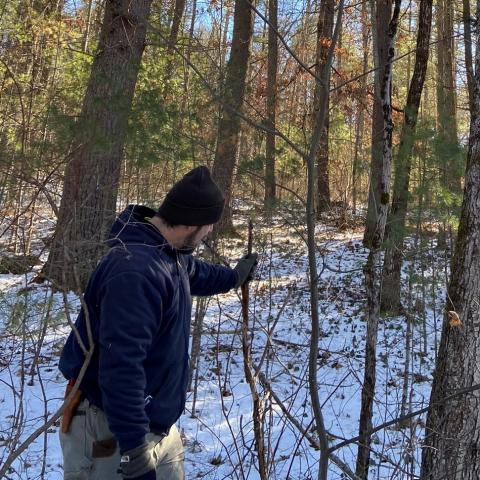
Photo courtesy of Piscataquog Land Conservancy
4) Blue Beech - Carpinus caroliniana
Plant names can be hard! Anyone interested in plants has come across a laundry list of common names and scientific names, and it seems like everyone refers to it as something different. Carpinus caroliniana might be referred to as American hornbeam, musclewood, ironwood, muscle beech, or blue beech. The defining characteristic of this smaller tree is a unique bark appearance – the undulations appear to be sinuous or muscley, giving this species a few of its nicknames.
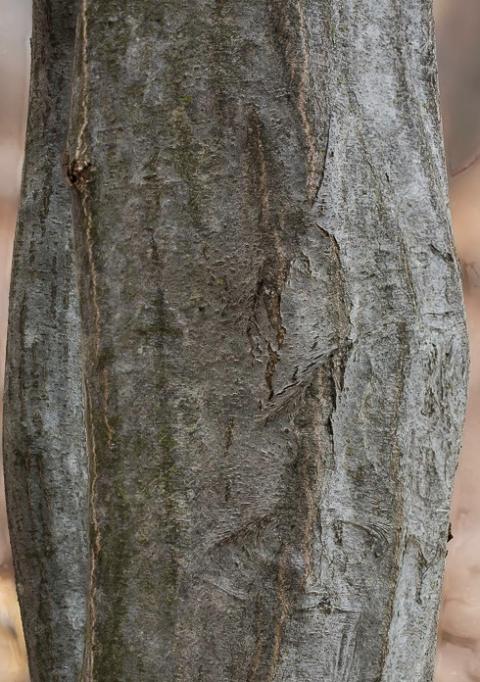
Photo courtesy of the Northern Forest Atlas

Photo courtesy of Piscataquog Land Conservancy
5) Pitch Pine - Pinus rigida
In New England, white pine is iconic. It’s easily recognizable by its bluish-green tufts of five needles and elongated cones. However, white pine isn’t the only species of pine in our forests.
The group was lucky enough to come across a tall, 3-needled evergreen tree with stout, prickly, pointy cones visible from the ground and scattered around its base–a pitch pine! Pitch pine cones are unique in that they may hold onto their seeds until an extreme heat event (like a forest fire), making their release timely to ensure the survival of the species. These fire-adapted cones are called “serotinous” cones.
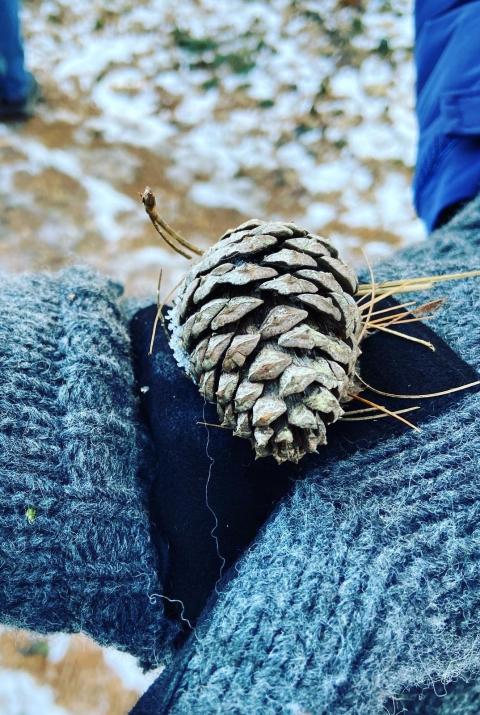
Photo courtesy of Piscataquog Land Conservancy
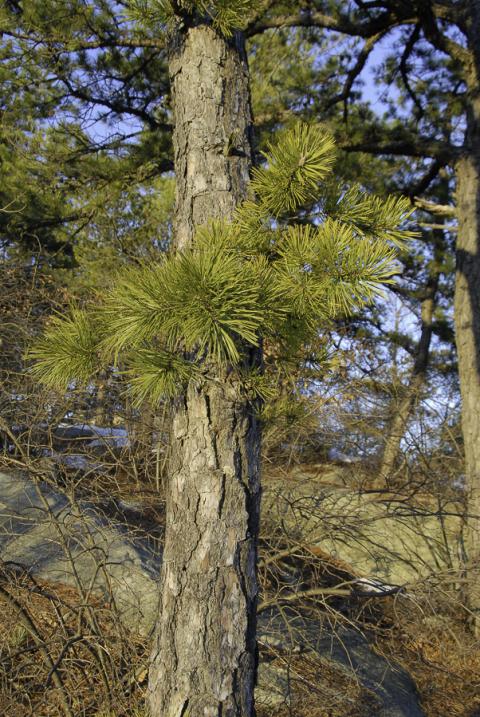
Photo courtesy of the Northern Forest Atlas
Have a question about your woodlot? Contact your Extension County Forester today!
Do you love learning about stuff like this? Subscribe to the NH Woods & Wildlife Newsletter.
About Piscataquog Land Conservancy: Founded in 1970 and headquartered in New Boston, the Piscataquog Land Conservancy (PLC) is a private, non-profit land conservation organization dedicated to conserving the land, water and wildlife of twenty-three communities in southern New Hampshire. Learn more at https://plcnh.org/.
